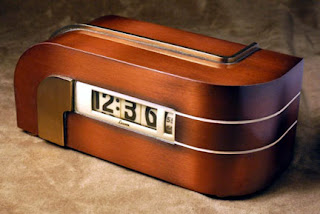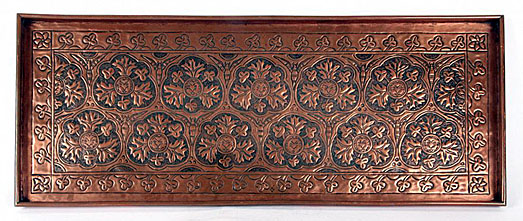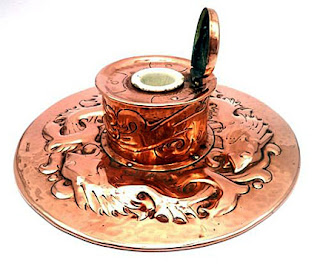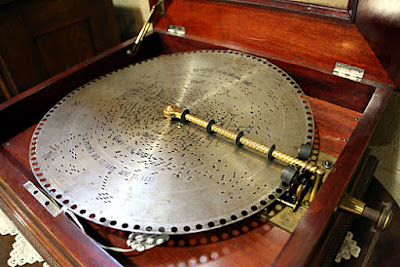 QUESTION: While out antiquing recently, I came across a beautiful hand-painted porcelain water pitcher decorated with bright red cherries at the back of a shelf. The price was $25, so I figured for that I could afford to buy it. It stands about 11 inches tall and has “BBC/CHINA” stamped on the bottom in black. I’ve never saw a mark like this before and the pitcher like a copy of more expensive Haviland china.
QUESTION: While out antiquing recently, I came across a beautiful hand-painted porcelain water pitcher decorated with bright red cherries at the back of a shelf. The price was $25, so I figured for that I could afford to buy it. It stands about 11 inches tall and has “BBC/CHINA” stamped on the bottom in black. I’ve never saw a mark like this before and the pitcher like a copy of more expensive Haviland china.
ANSWER: It seems that you’ve stumbled upon a rare piece of china made by the Bell Pottery Company of Findlay, Ohio. Due to a string of unlucky occurrences, the company only produced fine china rivaling French Haviland and Limoges porcelain for five years, from 1901 to 1906, making pieces scarce.
Located in northwestern Ohio, Findlay was better known for its glass. But at the end of the 19th century, the city basked in the glow of a natural gas boom. City fathers used the seemingly endless supply of natural gas to entice factory owners to build there. In 1888, they advertised for a high quality pottery factory to locate there. They offered free land, free natural gas and a$10,000 bonus as incentives.
 Although he had no experience making pottery, William Bell, a glass jobber from East Liverpool, Ohio, accepted the offer. He teamed up with his brother, Edwin Bell, and Henry Flentke to build a pottery factory which they called Bell Brothers and Company Pottery. They had high hopes for their business, but problems plagued them from the beginning.
Although he had no experience making pottery, William Bell, a glass jobber from East Liverpool, Ohio, accepted the offer. He teamed up with his brother, Edwin Bell, and Henry Flentke to build a pottery factory which they called Bell Brothers and Company Pottery. They had high hopes for their business, but problems plagued them from the beginning.
Even before they built their factory, the Bells had trouble convincing reluctant railroad officials to build a side track to the new facility. Once the track was approved, workers faced the difficult task of clearing land for the factory and constructing its four brick buildings and six kilns. Finally, in August of 1889, all was ready and production began with 150 employees, including hand-decorators.
Bell Pottery fired its first wares in July 1889, and by the following month 150 workers kept the dinnerware, toilet ware and hotel china rolling out. By March 1890, the pottery was running night and day and unable to keep up with orders. The partners added three new kilns to increase production.
 The first problem occurred in January, 1891, when all the employees went on strike when the owners tried to reduce wages. The city's rapid industrial growth had created a shortage of adult workers. In desperation, the pottery company's owners turned to orphanages, hiring girls as young as 14. By July, the Bells and Flentke settled the labor dispute and most of the old hands went back to work.
The first problem occurred in January, 1891, when all the employees went on strike when the owners tried to reduce wages. The city's rapid industrial growth had created a shortage of adult workers. In desperation, the pottery company's owners turned to orphanages, hiring girls as young as 14. By July, the Bells and Flentke settled the labor dispute and most of the old hands went back to work.
By the following years, troubles of a different sort had begun to brew when the city's gas supply dwindled, forcing the Bells to pay $100 a month for gas. They also sued the city's gas trustees for not paying the promised $10,000 bonus. Because of the unreliable supply of gas, the company had to convert to coal in 1893 to keep the factory operating. Unfortunately, just when things seemed to be looking up, a severe storm ripped the roof off the decorating room and damaged six kilns, causing over $8,000 damage. In August 1893, the plant announced a partial shutdown due to a lack of orders.
 In April 1894, the partners began to disagree and with the dissolution of the partnership, the court ordered the property to be sold. Flentke, then living in Evansville, Indiana, stopped the sale of the pottery. He resolved the differences between himself and the Bell brothers before the sale date, enabling the pottery to resume operations in August 1894, after a year of standing idle. But the peace lasted only two years, and in January of 1896, the court once again ordered the property sold for no less than $30,000. The Bell brothers purchased the pottery for 36,450 and paid Flentke $7,295 for his share.
In April 1894, the partners began to disagree and with the dissolution of the partnership, the court ordered the property to be sold. Flentke, then living in Evansville, Indiana, stopped the sale of the pottery. He resolved the differences between himself and the Bell brothers before the sale date, enabling the pottery to resume operations in August 1894, after a year of standing idle. But the peace lasted only two years, and in January of 1896, the court once again ordered the property sold for no less than $30,000. The Bell brothers purchased the pottery for 36,450 and paid Flentke $7,295 for his share.
In 1898, the Bell brothers incorporated the firm as the Bell Pottery Company.
In August 1899, Bell Pottery announced that it would begin producing hand-decorated white china, employing about 25 decorators. Common decorative motifs included currants, roses, blackberries, chestnuts and hops. Decorators painted portraits of people and still life pictures of flowers and fruit on pottery vases, tankards and other pieces.
 By December, they had spent $40,000 on repairs to three kilns and improvements including the installation of an oval dish jigger to enable the production of footed dishes for use as nut bowls or candy dishes. They also installed electricity for the first time. But the good times didn't last long. In April of 1900, fire destroyed the factory's south wing including the packing room, decorating room and offices. Two months later, lightning struck the factory, toppling both smokestacks for the decorating kilns.
By December, they had spent $40,000 on repairs to three kilns and improvements including the installation of an oval dish jigger to enable the production of footed dishes for use as nut bowls or candy dishes. They also installed electricity for the first time. But the good times didn't last long. In April of 1900, fire destroyed the factory's south wing including the packing room, decorating room and offices. Two months later, lightning struck the factory, toppling both smokestacks for the decorating kilns.
Although insurance only partially covered their loss, the Bell brothers didn't give up. The following year, the Bells issued additional stock, intending double the pottery’s capacity, employing 400. Their intention was to produce fine china that rivaled Haviland.
They rebuilt the factory and revived their business again. In addition to their regular pottery products, they diversified into the manufacture of tubes used to run electrical wiring through brick walls. Things were going so well, they built another factory in Columbus. Tragically, about the same time the new plant opened in 1902, William Bell died unexpectedly following surgery. Edwin continued to run both factories.
Edward had grand plans for the Columbus operation. He planned on 17 buildings with 12 kilns, to be doubled as the need arose. Lack of equipment caused more delays. By November 1904, he announced that he would move the Findlay operation to Columbus. The new pottery produced wares for about a year but by September of 1906, it was in the hands of a receiver and closed for good.
To read more articles on antiques, please visit the Antiques Articles section of my Web site. And to stay up to the minute on antiques and collectibles, please join the over 30,000 readers by following my free online magazine, #TheAntiquesAlmanac. Learn more about "The Vernacular Style" in the 2024 Winter Edition, online now. And to read daily posts about unique objects from the past and their histories, like the #Antiques and More Collection on Facebook.
























































